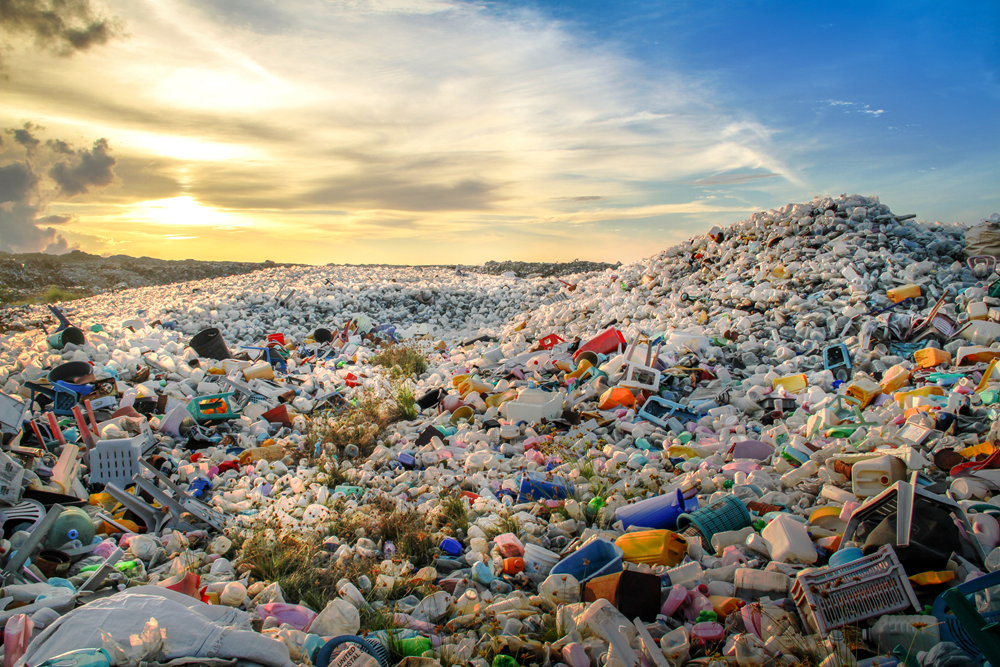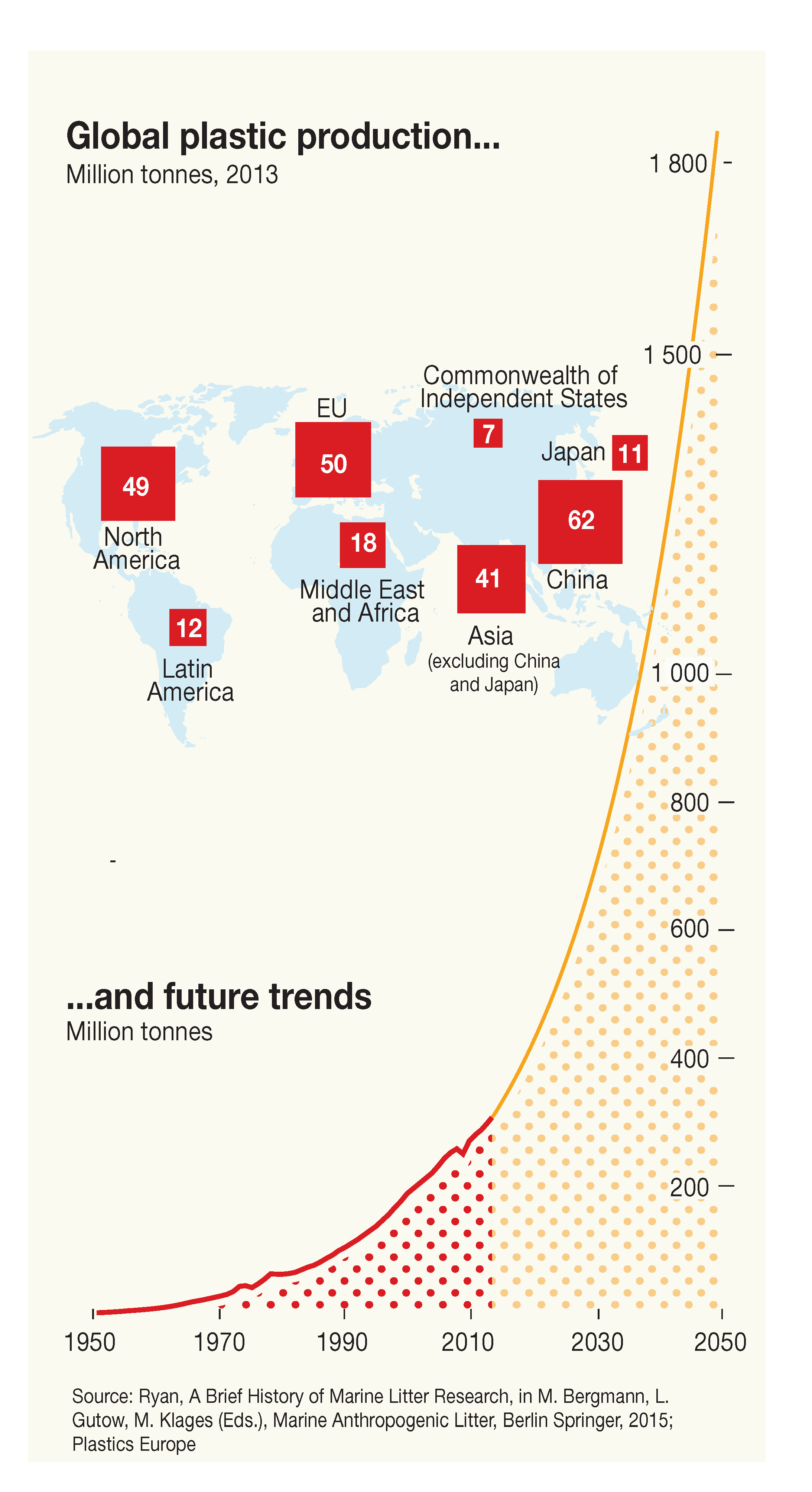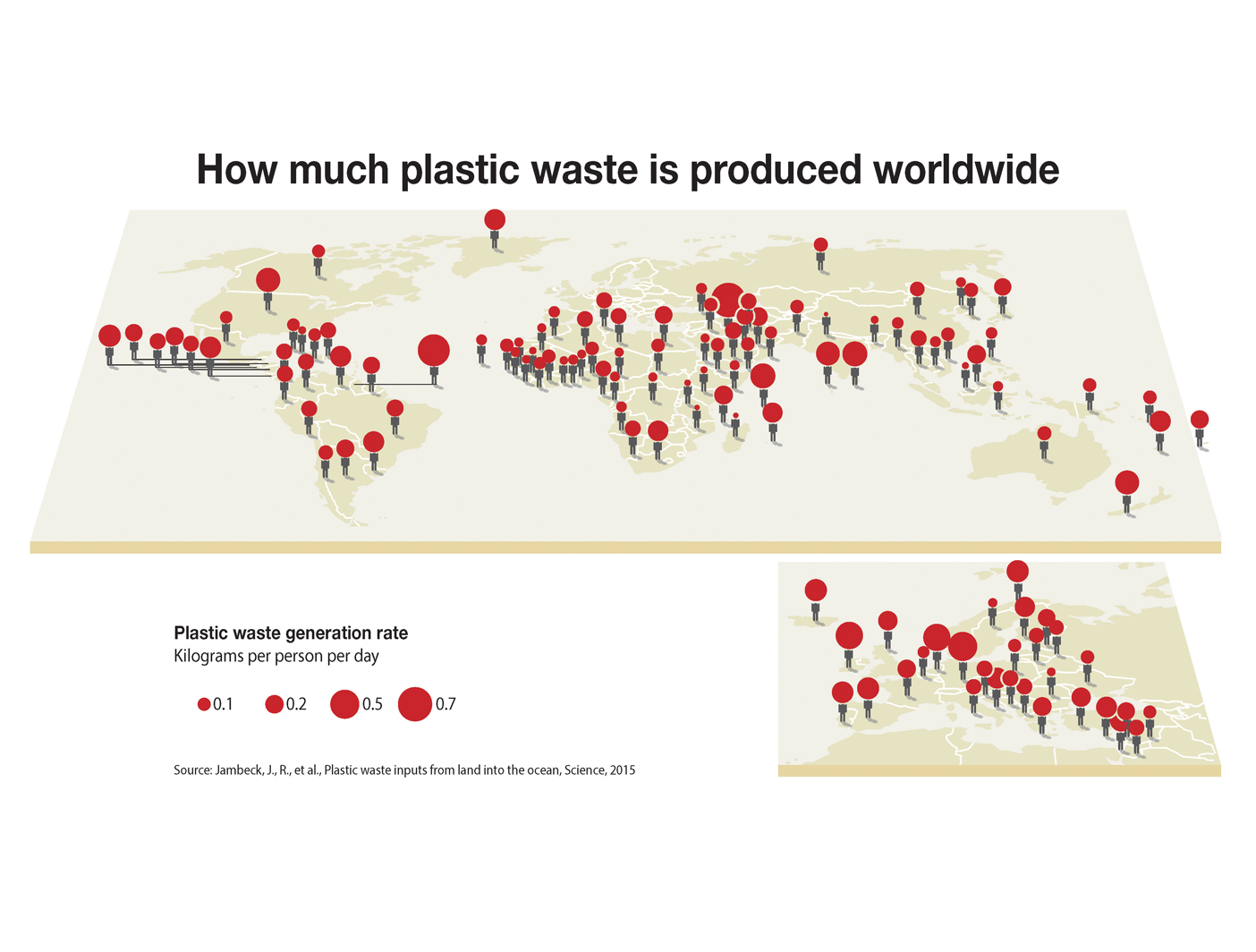Plastic waste and especially marine plastic litter is an environmental problem occurring on a global scale today. The ubiquitous transboundary movement of plastic wastes and microplastics is becoming a major concern as their property of durability makes their particles remain for long period of time.
 |
|
Plastics have only been mass-produced for around 60 years and therefore it is impossible to know with certainty how long they last in the marine environment. Most types of plastic are not biodegradable. In fact, they are extremely durable. This means the majority of polymers manufactured today will persist for decades and probably for centuries, if not millennia.
Over the last ten years we have produced more plastic than during the whole of the last century. Plastic accounts for around 10 percent of the total waste generated and constitutes approximately 90 percent of all trash floating on the ocean's surface, with 46,000 pieces of plastic per square mile. It is nearly impossible to clean the seas from plastic waste and microplastics. Therefore, this pollution needs to be tackled at source – it is not sustainable to clean up plastic pollution once it has entered the sea.

Click to view graphic
|
Plastics pollution can arise at all stages during the life-cycle, from leakages during production and manufacturing, abrasion while products are in use to dumping or poor practices in handling wastes. Larger pieces of plastic accumulate on beaches or sink to the ocean floor. A less significant share of plastic waste is carried on ocean currents and can accumulate in ocean gyres. Under the influence of sunshine and saltwater, larger pieces can break into microplastic particles. These are now very widely distributed through the oceans.
Larger pieces of plastic can cause harm directly to marine animals – for example, by entanglement in debris. Many species of birds ingest smaller pieces of plastic. Plastics have been documented in many habitats and in over 100 species and can impact an organism at many levels. Microplastics have been documented in finfish, shellfish and crustaceans, which are consumed by humans - the health impacts are unknown.
Full degradation of a plastic item implies complete breakdown and decomposition into water, carbon dioxide, methane and other non-synthetic molecules. For the large majority of plastic items, even if they disintegrate by breaking down into smaller and smaller plastic debris under the influence of weathering, the polymer itself may not necessarily fully degrade into natural chemical compounds or chemical elements under marine conditions.
|
In addition to polymers, additives such as flame retardants (e.g. polybrominated diphenyl ethers), and plasticizers (e.g. phthalates) are also mixed into synthetic materials to increase their flexibility, transparency, durability, and longevity. Some of these substances, present in most plastic objects found in the marine environment, are known to be toxic to marine organisms and to human. Those plastics would be covered by the Stockholm Convention.
 |
 |
Click to view graphics
|
During the Basel Conference of the Parties from 29 April to 10 May 2019, Governments amended the Basel Convention to include plastic waste in a legally-binding framework which will make global trade in plastic waste more transparent and better regulated, whilst also ensuring that its management is safer for human health and the environment. At the same time, a new Partnership on Plastic Waste was established to mobilise business, government, academic and civil society resources, interests and expertise to assist in implementing the new measures, to provide a set of practical supports – including tools, best practices, technical and financial assistance.